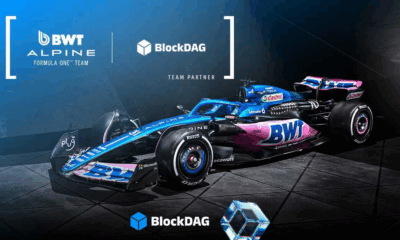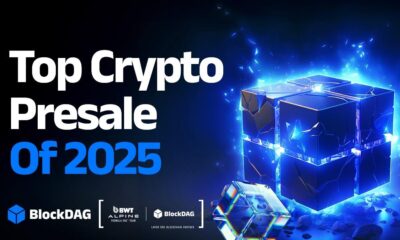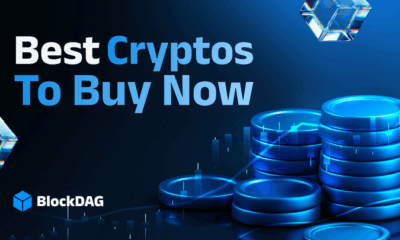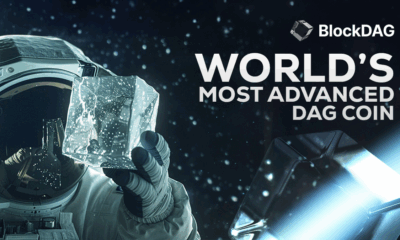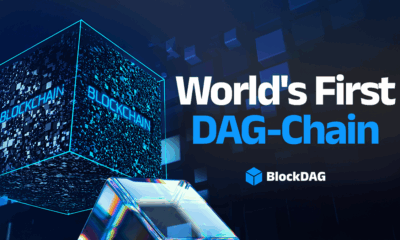Crypto Currency
$313M+ Raised! Is BlockDAG Ready to Outpace Solana in the Next DeFi Wave?

Solana became one of crypto’s headline names by offering speed above all else. Known by some as an “Ethereum killer,” its promise of over 65,000 transactions per second and minimal gas fees drew attention fast. But speed came with tradeoffs. Repeated outages, heavy validator control, and concerns about its growing size raised doubts about whether fast alone was good enough. Now, BlockDAG (BDAG) is stepping into that space. It isn’t just copying Solana’s strong points. It’s also responding to the flaws.
With more than $313 million already raised in its presale, a $600 million target in sight, and over 2 million users mining on its X1 app, BlockDAG is further along than many expect. For those watching what might shape the next DeFi phase, this Layer 1 is working to strike a better balance between speed, stability, and ease of use.
Looking Beyond Speed in the Layer 1 Race
Solana picked up momentum in 2021 and 2022, especially across NFTs and retail dApps. But the same fast design that made it popular also created problems. It ran on a Proof-of-History model that delivered speed but hadn’t been tested at scale. That led to breakdowns. Between 2021 and 2023, Solana went offline at least seven times.
This caused real concern. Apps couldn’t count on constant uptime. Some users lost access during outages. And confidence started to fade, especially for serious DeFi use.
BlockDAG takes a different route. It uses DAG to enable fast, parallel transactions but adds Proof-of-Work for deeper decentralization and network protection. This approach pulls from Bitcoin’s durability while offering speeds that reach 15,000 transactions per second.
Where Solana went all-in on speed, BlockDAG is focusing on reliable performance. The design aims to scale without cutting corners, keeping the network secure and steady even during heavy use.
How BlockDAG Is Building Before It Launches
What sets BlockDAG apart is how it’s preparing before going live. Many chains, like Solana, focused mainly on getting their mainnet out first. BlockDAG is doing it differently. Its testnet is already active, it works with Ethereum tools, and it has a no-code dApp builder that lets people create smart contracts without needing to code.
More than 23 billion BDAG coins have been sold already, showing strong interest well before its official launch. That early traction is similar to Solana’s early growth, but BlockDAG seems to be doing it in a more structured way, starting with tools, not adding them later.
Here’s a quick comparison:
- Solana grew after going live; BlockDAG is gaining ground before launch.
- Solana’s developers had to make their own tools; BlockDAG is giving them ready-to-use options.
- Solana dealt with slowdowns during peak times; BlockDAG is planning for high speed from day one.
This approach is why some analysts are starting to see BlockDAG as more than just another Layer 1. It could be a stronger base for running DeFi, dApps, and DePIN tools without facing technical problems.
Planning for Liquidity and Early Visibility
BlockDAG is also thinking ahead when it comes to liquidity. Unlike Solana, which leaned on grants and early-stage funding, BlockDAG is getting all its support from its community. Its $600 million crypto presale goal will help it:
- Add liquidity across more than 20 exchanges (5 already confirmed)
- Finish its core systems before going public
- Provide early support to developers through grants and tools
- Launch key DeFi features like a bridge, DEX, and lending tools before its listing
On top of that, BlockDAG is already getting attention beyond the crypto world. It has a partnership with Inter Milan and is planning a new campaign in the U.S. These kinds of moves are similar to Solana’s push into sports and apps for regular users, but BlockDAG is doing it earlier in its journey.
Could BlockDAG Reach Solana’s Market Level?
Solana is currently in the top 10 crypto projects with a market cap close to $70 billion. Could BlockDAG get there too? It’s still early, but the first signs are worth noticing. Take a look at how the numbers compare:
- Presale price: $0.0018 (ends June 20)
- Listing price: $0.05 (already confirmed)
- Estimated short-term price target: $1
- Longer-term outlook: Some analysts see potential for $4+ if progress stays on track
Reaching $1 could give BlockDAG a market cap around $50 billion, depending on how many coins are circulating. That would put it near Solana’s current level. Still, it’s not just about numbers. What really matters is how the rollout is handled.
BlockDAG already has a detailed six-week launch plan in place:
- Presale ends → Mining stops and staking ends
- Mainnet begins → Nodes and ASIC mining equipment go live
- DeFi features go online → Launchpad, DEX, and oracles are activated
- Coin goes public → 40% of coins are airdropped
In simple terms, the foundation is already there to grow, not just in tech and funding, but also in public interest.
Is This a New Kind of Layer 1?
Solana made a name for itself by focusing on speed first and worrying about decentralization later. BlockDAG is choosing a different path. It’s putting decentralization, strong developer tools, and steady growth at the center, while still aiming for high speeds and useful applications.
Solana won’t be pushed aside overnight. But history shows that projects which blend security and easy access and build strong user bases early tend to stay relevant. That’s what happened with Bitcoin. That’s what happened with Ethereum.
Now, BlockDAG might be on a similar path.
For people watching this space closely, it seems the chance to get in early is still available, but probably not for long.
Website: https://blockdag.network
Presale: https://purchase.blockdag.network
Telegram: https://t.me/blockDAGnetworkOfficial
Discord: https://discord.gg/Q7BxghMVyu
Crypto Currency
White Rat (WRAT) Joins the Meme Coin Arena With Community-Driven Solana Identity
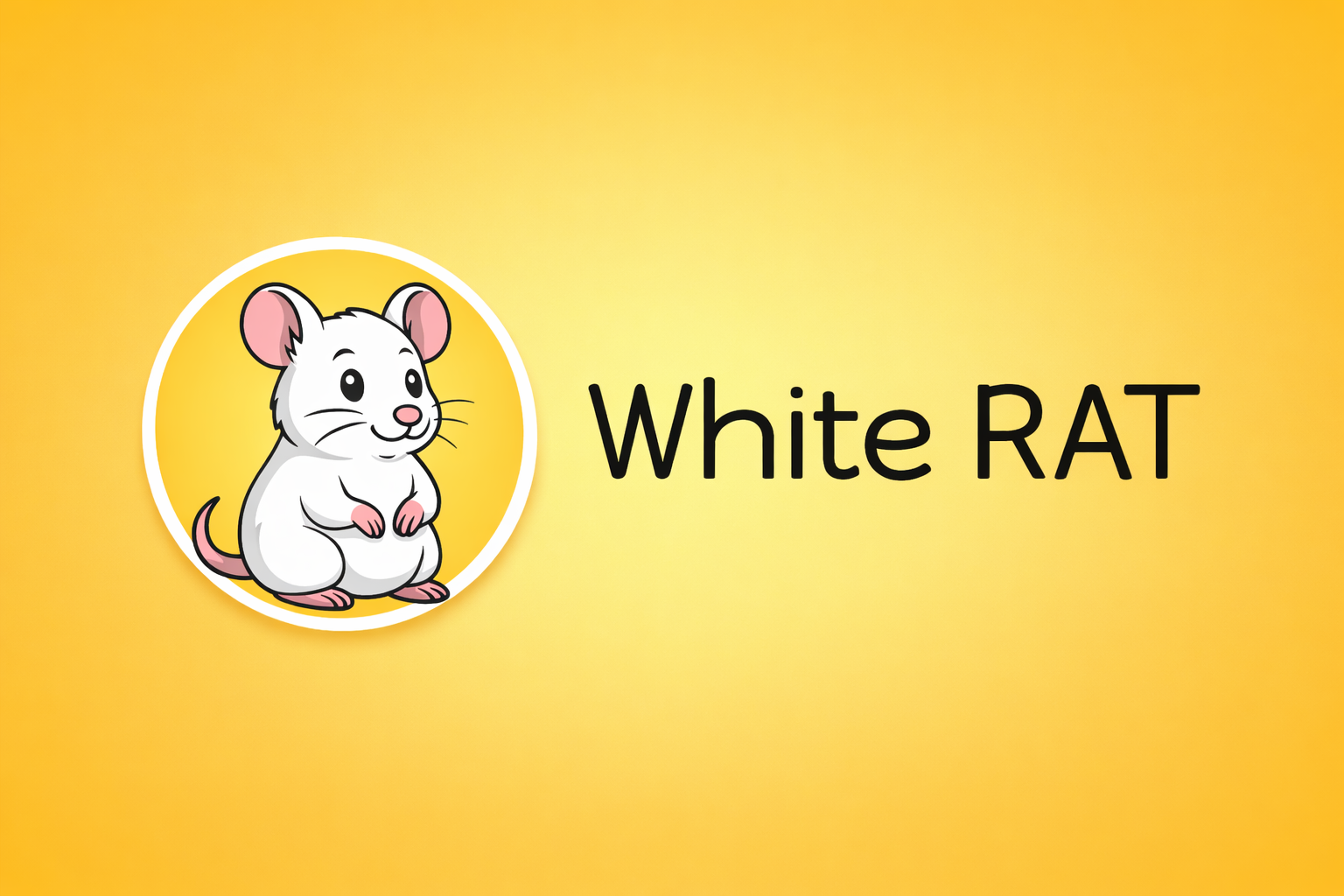
White Rat (WRAT) is the newest Solana-based memecoin gaining early market attention through its minimalist branding, mascot-driven identity, and emphasis on community participation. Built around a simple but expressive rat character, the project positions itself within Solana’s rapidly expanding meme-fi ecosystem—one where culture, speed, and social engagement matter as much as utility.
Launched as a lighthearted, community-first experiment, White Rat is designed to appeal to traders seeking fast transactions, viral meme potential, and low-friction access to a Solana-native token.
A Solana Meme Coin Built for Speed and Culture
White Rat operates on the Solana blockchain, allowing for instant, inexpensive transfers—an essential advantage for meme tokens that thrive on high-volume activity, rapid onboarding, and social trading. With Solana continuing to dominate memecoin momentum in 2025, WRAT enters a market environment already primed for fast-moving, culture-driven assets.
The project emphasizes simplicity: no complex DeFi mechanics, no multilayered staking systems, and no utility claims beyond the meme itself. Its value proposition is clear—community engagement powered by playful branding.
Mascot-First Branding and Viral Design
White Rat’s visual identity centers around a stylized white rat character, leaning heavily into absurdist and comedic meme culture. The mascot’s exaggerated, energetic style mirrors the design of many popular Solana meme projects, positioning WRAT to compete through recognizable branding rather than technical differentiators.
This mascot-driven approach helps the token stand out across social media, enabling organic meme spread and community-generated content—both major growth drivers in the memecoin economy.
Token Supply and Market Positioning
White Rat launches with a straightforward token model, using a fixed total supply common across Solana’s meme landscape. No vesting, rewards, or advanced tokenomics are highlighted publicly, reflecting its lightweight design philosophy.
The project’s early positioning focuses on:
- A simple token structure
- Easy accessibility for new Solana users
- Emphasis on community storytelling and meme generation
- Growth driven by culture, not complexity
As with most emergent meme assets, WRAT’s market trajectory will depend heavily on social engagement and continued visibility within Solana communities.
Early Community Signals and Growth Outlook
Public channels surrounding the project highlight an emphasis on collective participation, inside jokes, and an evolving lore built by holders. This mirrors the pattern seen across successful Solana memecoins, where community cohesion and shared humor are often the primary growth engines.
If meme sentiment on the Solana network remains strong, White Rat could benefit from the broader trend of personality-driven tokens capturing rapid liquidity and trader interest.
Outlook
While still early in its lifecycle, White Rat presents itself as a clean, mascot-focused Solana meme coin built for fast transactions and viral culture. Its future growth will depend on community momentum and its ability to stand out amid Solana’s crowded memecoin landscape.
Blockchain
DinoSol Debuts as a Meme-Driven Solana Token With Community-First Positioning

DinoSol (DINOSOL), a new entrant in the Solana meme-coin ecosystem, has launched with a strong emphasis on branding, simplicity, and early-stage community engagement. Built on Solana and centered around a playful, cartoon-styled dinosaur mascot, DinoSol joins the growing wave of culture-driven memecoins that leverage viral identity over utility-heavy roadmaps.
While still in its early development phase, DinoSol positions itself as a community-focused token aiming to expand through social momentum, low-cost Solana transactions, and a recognizable visual identity.
A Meme Coin Built on Solana’s High-Speed Infrastructure
DinoSol operates on the Solana blockchain, benefitting from fast, inexpensive transactions — a critical advantage for meme coin communities that thrive on rapid micro-trading, gifting, and community campaigns.
The project highlights accessibility as a core pillar: lightweight token mechanics, easy integration with Solana wallets, and a low barrier to entry for new users entering the meme token space.
Branding, Lore, and Community Identity
Unlike utility-first projects, DinoSol leans heavily on meme culture and its distinctive mascot. The design reflects exaggerated cartoon expressions, bright color themes, and a comedic aesthetic intended to resonate with viral crypto culture.
The branding suggests a lighthearted, entertainment-driven narrative — a key trait of recent memecoin successes.
DinoSol emphasizes community participation across its homepage and social channels, positioning the token as a collective movement rather than a structured technical product.
Tokenomics and Supply
Based on available public details, the token operates with a fixed supply model, a common approach in Solana meme tokens designed to reinforce scarcity and encourage early participation.
No complex staking, lockups, or reward mechanisms are described — aligning with its simplified meme-first positioning.
The focus remains on transparent supply, easy ownership, and frictionless trading.
Emerging Market Presence
As a newly listed asset on CoinMarketCap, DinoSol joins the expanding roster of Solana-based memecoins that have gained traction throughout 2025. While early trading metrics are still forming, interest has grown due to:
- Rapid community expansion
- Strong memeable branding
- Increasing visibility across Solana meme-fi culture
DINOSOL’s growth trajectory will depend largely on social momentum and how quickly the project can sustain community engagement.
Outlook
DinoSol is entering a highly active segment of the crypto market, where cultural resonance and simplicity often outweigh utility at launch. If meme sentiment on Solana continues to strengthen, DinoSol could benefit from the broader trend toward culture-and-community driven tokens.
For now, the project remains early-stage but well-positioned within Solana’s thriving meme ecosystem.
Crypto Currency
Cast Oracles: The New Decentralized Executor Network Reshaping On-Chain Automation
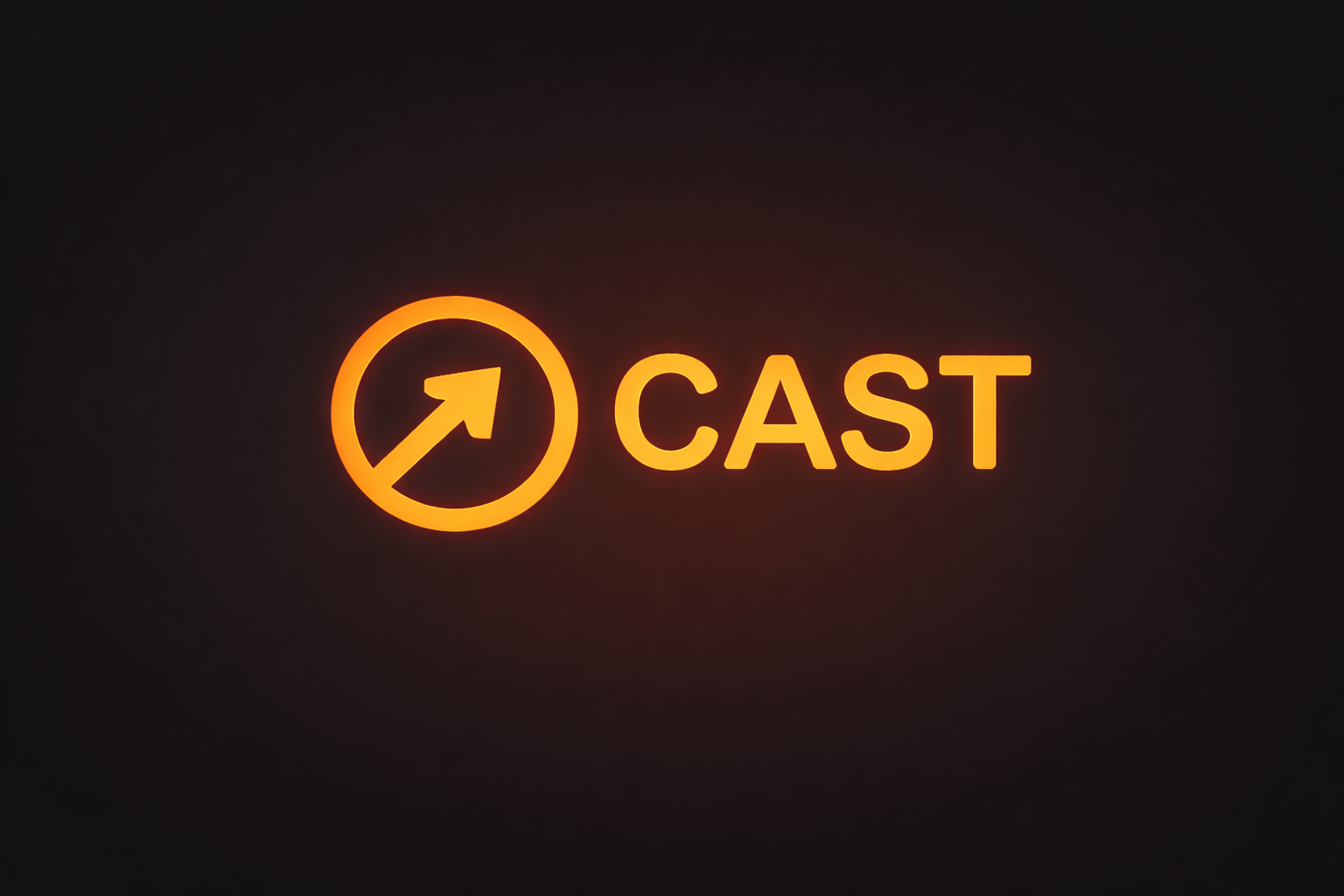
Cast Oracles (CAST) is emerging as one of the newest decentralized automation and oracle layers designed to bring trustless execution to Web3 applications. As on-chain activity becomes more complex, developers increasingly rely on networks that can relay data, automate transactions, and execute logic without centralized intermediaries. Cast Oracles aims to position itself at the center of this evolution.
What Is Cast Oracles?
Cast Oracles is a decentralized executor and automation network that allows smart contracts to outsource tasks such as:
- On-chain data verification
- Automated contract execution
- Scheduled transactions
- Real-time event monitoring
- Multi-chain task routing
Instead of relying on centralized servers, Cast Oracles uses a permissionless network of executors responsible for performing tasks and delivering results directly to blockchain smart contracts.
This model enhances reliability by eliminating single points of failure—one of the biggest concerns in legacy oracle and automation systems.
How Cast Oracles Works
The Cast Oracles network is powered by distributed nodes that listen for job requests submitted by protocols, decentralized applications, and smart contracts. Once a task is triggered, the executor network processes the request and returns the required data or executes the instructed transaction.
Key components include:
- Executor Nodes — perform jobs and verify one another to prevent manipulation
- Task Schedulers — automate recurring or time-sensitive actions
- Data Handlers — fetch external information or cross-chain data
- CAST Token — used for payments, staking, and network security
This infrastructure is designed to support DeFi platforms, automation-heavy dApps, trading systems, and any project requiring low-latency, trust-minimized execution.
Why Cast Oracles Is Generating Attention
The growth of DeFi and modular blockchain ecosystems has created an increasing need for cross-chain automation and reliable off-chain computation. Traditional oracles focus primarily on pricing data, while Cast Oracles expands the scope by offering a full execution environment.
Early community discussion highlights several strengths:
1. Decentralized Automated Execution
Protocols can trigger actions such as position rebalancing, liquidation prevention, limit orders, and yield strategy automation without relying on centralized services.
2. Multi-Chain Interoperability
Cast Oracles is designed to operate across different chains and virtual machine environments, supporting the shift toward interconnected blockchain networks.
3. Enhanced Data Integrity
The executor network uses redundancy and verification layers to prevent fraudulent execution or inaccurate data submissions.
4. Incentive-Aligned Token Model
CAST stakers secure the network, while executors earn CAST for completing tasks—creating a mutually reinforcing economic cycle.
Potential Use Cases for Cast Oracles
The network can support a wide range of real-world and DeFi applications:
- Price-triggered trades
- Automated yield strategy adjustments
- Governance execution scheduling
- Cross-chain message validation
- NFT metadata automation
- Gaming event triggers
These capabilities place Cast Oracles in the category of next-generation infrastructure protocols supporting the move toward autonomous smart contract ecosystems.
The Role of the CAST Token
The CAST token is central to the network’s design:
- Staking secures executor operations
- Rewards incentivize accurate task completion
- Payments allow dApps to fund automation and oracle requests
- Governance enables token holders to vote on network parameters
This utility model positions CAST as both a functional asset and a governance component for network expansion.
Outlook
Cast Oracles is entering a rapidly growing sector where competition is intensifying, but demand is scaling even faster. As more blockchain applications require reliable automation, decentralized execution protocols are becoming essential infrastructure.
If Cast Oracles successfully delivers low-latency automation, cross-chain reliability, and verifiable execution at scale, it could position itself as a core layer in the evolving Web3 stack.
-

 Crypto3 years ago
Crypto3 years agoCardalonia Aiming To Become The Biggest Metaverse Project On Cardano
-

 Press Release5 years ago
Press Release5 years agoP2P2C BREAKTHROUGH CREATES A CONNECTION BETWEEN ETM TOKEN AND THE SUPER PROFITABLE MARKET
-
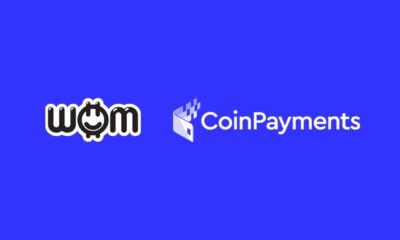
 Blockchain5 years ago
Blockchain5 years agoWOM Protocol partners with CoinPayments, the world’s largest cryptocurrency payments processor
-

 Press Release5 years ago
Press Release5 years agoETHERSMART DEVELOPER’S VISION MADE FINTECH COMPANY BECOME DUBAI’S TOP DIGITAL BANK
-
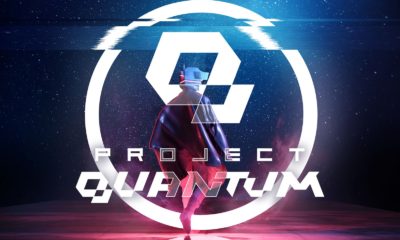
 Press Release5 years ago
Press Release5 years agoProject Quantum – Decentralised AAA Gaming
-

 Blockchain5 years ago
Blockchain5 years agoWOM Protocol Recommended by Premier Crypto Analyst as only full featured project for August
-

 Press Release5 years ago
Press Release5 years agoETHERSMART DEVELOPER’S VISION MADE FINTECH COMPANY BECOME DUBAI’S TOP DIGITAL BANK
-

 Blockchain6 years ago
Blockchain6 years ago1.5 Times More Bitcoin is purchased by Grayscale Than Daily Mined Coins



